
To Oaxaca and the Coffee Region
Towards the end of 2022, we decided to take a trip to Mexico to find a new coffee for our offer. We had been in touch with several exporters from Mexico and we had pretty much decided, whom we were going to work with and which Mexican region we would buy coffee from. By way of New York City, we were headed to Mexico, where we spent a few days on the coast, before reaching Oaxaca de Juárez, the capital of the state of Oaxaca. Here, we met up with Laura who works for Ensambles, a Mexican company that exports specialty coffee and also runs a farm of its own. In the hotel lobby over a beer, Laura told us a little bit about the company, their philosophy as well as the coffee growing region of the Sierra Mazateca. She had just returned from the Sierra Mazateca, which is where we would spend the next couple of days with her colleagues.
The Sierra Mazateca is a mountain range in the north of the state of Oaxaca. The most important town in the region, Huautla de Jiménez, caught some attention after John Lennon, Bob Dylan, Mick Jagger and Albert Hofmann (who discovered LSD) travelled there in the sixties and visited the Mazatecan shaman María Sabina. To this day, there are countless clues and memorials that make sure María Sabina and the psychoactive mushrooms will not be forgotten in this little city that is mostly just called Huautla. The town does not see a ton of international visitors. The ones who come will most likely do so because of coffee, for the magic mushrooms – or to see the extensive cave system «Sistema Huautla», which is amongst the deepest in the world.
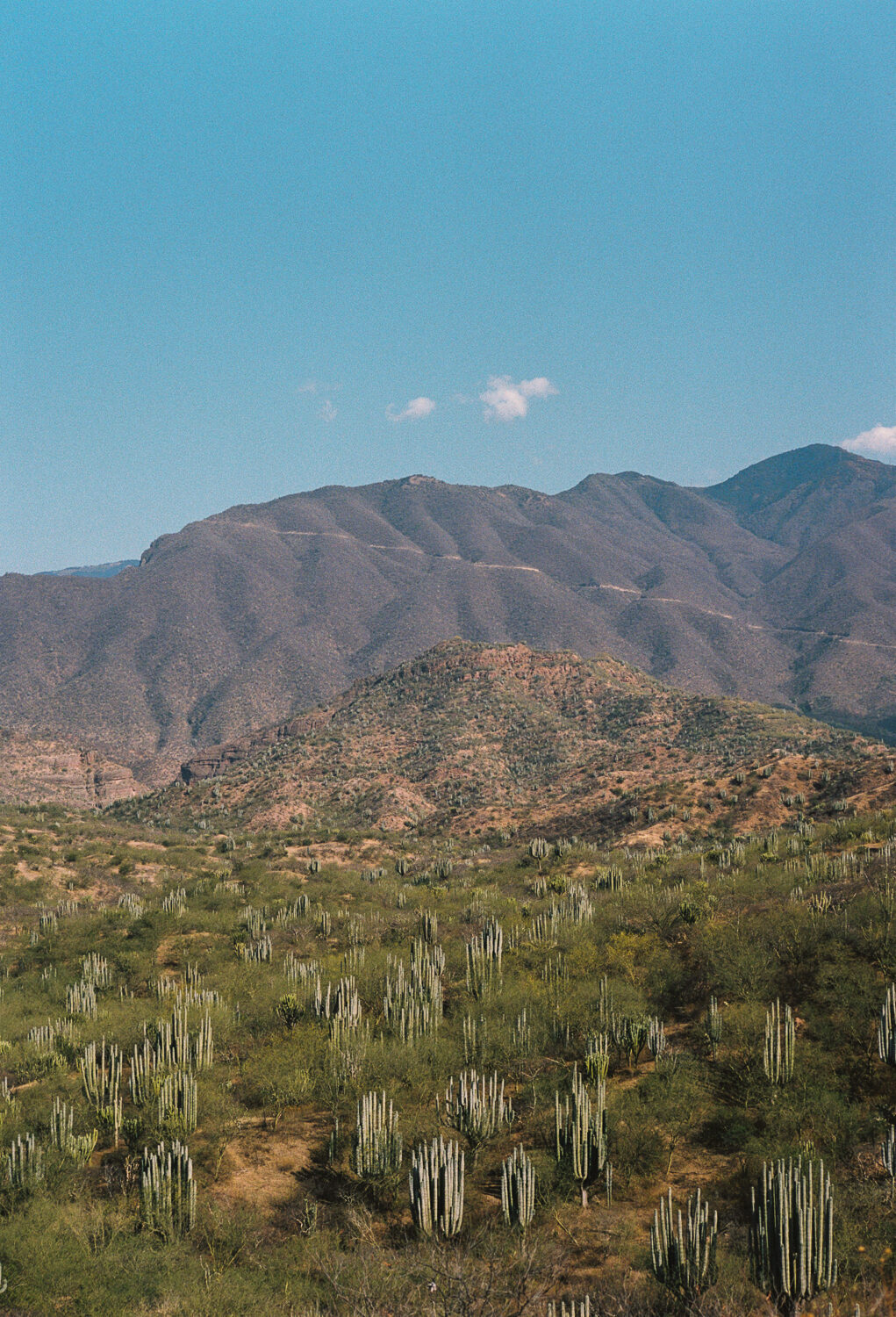
Sierra Mazateca
The language the people in this region speak is called Mazatecan and although many also speak Spanish, there are a lot of coffee producers who do not. Mazatecan is a rather unique language, in which one does not only communicate in words, but with whistling sounds, too. People can have whole conversations entirely by whistling, it is incredible and highly nuanced.
We traveled the roughly 300 kilometers from Oaxaca de Juárez to Huautla by rental car and we rather enjoyed the drive that took us a little bit more than five hours. The route was really beautiful and the views of various valleys were gorgeous almost throughout the whole route. One moment, we passed a huge cactus desert, the next we found ourselves in a completely different, very green vegetation. We arrived in Huautla de Jiménez around lunchtime and after checking into the hotel and refueling with a quick lunch, Miguel from Ensambles picked us up. He took us to visit a nearby community of coffee producers. We met Miguel for the first time and we used the short drive to get to know each other a little bit, before we arrived at a small community called Xochitonalco. Around 15 coffee producers, most of them at an advanced age, were already waiting for us there – accompanied by Osiris, a young woman who also works for Ensambles. We walked through various coffee fields, some of which were situated on steep hills and in densely overgrown areas, some of which more reminiscent of a forest than a coffee field.
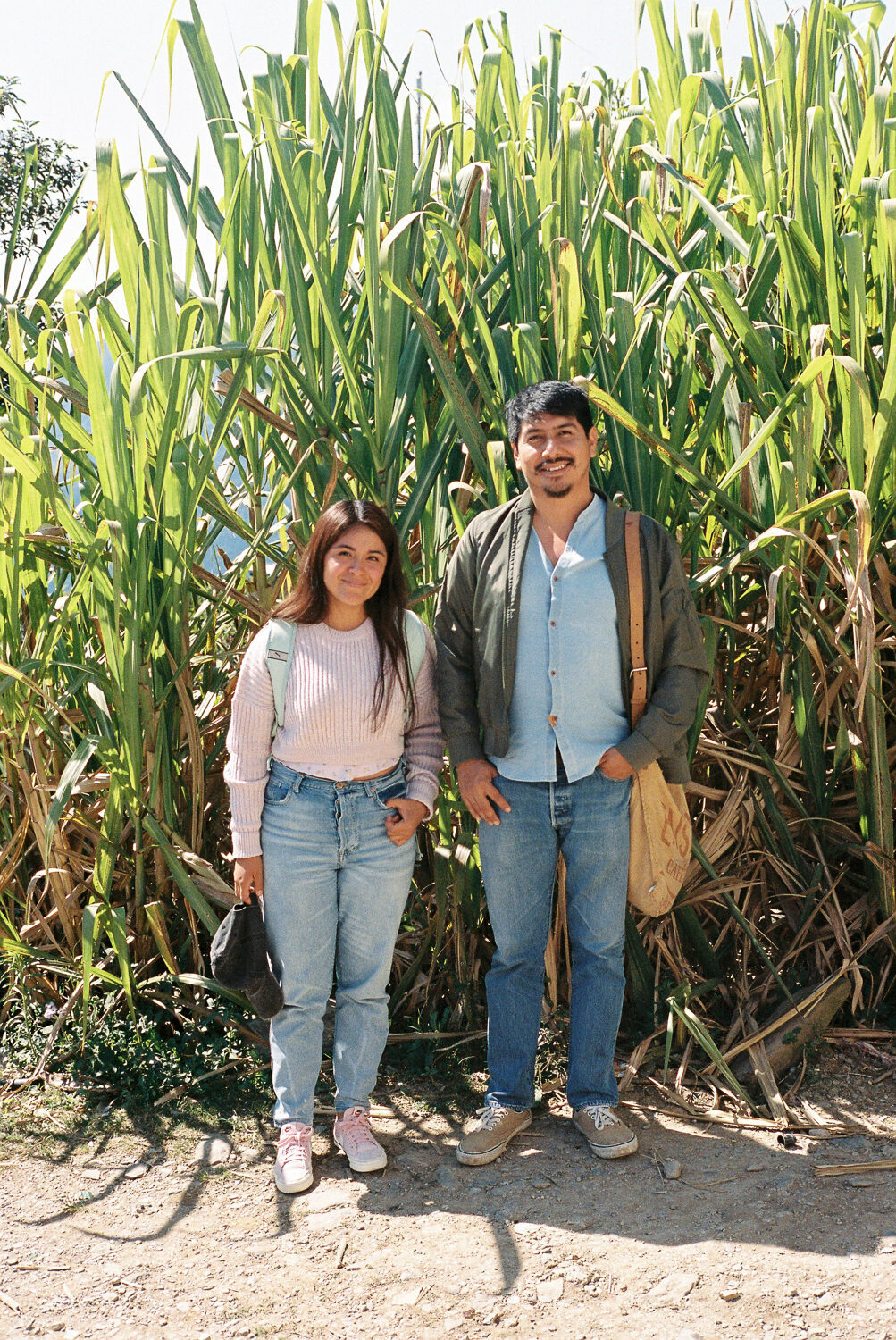
Miguel & Osiris
It quickly became clear that Miguel is very passionate about his job, coffee production, the landscapes in this region and Mexico in general. He told us a lot about coffee in Mexico as well as Mexico as a country and he was very interested in learning more about Switzerland, too. All year round, Miguel is on the road in all of Mexico's coffee growing regions Ensambles work in. He pretty much lives out of his car, staying in one place for a couple of weeks, before moving on to the next town. Being out in the fields most days, Miguel has known many of the coffee farmers for several years and has accumulated an extensive knowledge of coffee farming, which he passes on to the farmers day after day. He may advise someone on finding the ideal composition of the soil to grow coffee seedlings in or help spot plants infected by fungus. Miguel is also in charge of agreeing on a price for each coffee with its producers.
Osiris grew up here and lives in Huautla, she knows this region inside out. Her days are mostly spent in the fields with the coffee producers in the Sierra Mazateca. She knows best, which farmer is in which stage of the harvest or processing. Just like Miguel, she passes on a lot of knowledge about the cultivation of coffee. She also gathers the issues producers are facing and reports those to whomever they concern at Ensambles to provide the necessary support. While Miguel has a broader overview across the various coffee growing regions in the country, Osiris is the direct contact person at Ensambles for the coffee producers within the Sierra Mazateca. The company employs one person with the same function in each of the coffee regions they are active in.
Ensambles
Ensambles is based in Veracruz, where the company runs its own, biodynamic coffee farm «El Equimite», which produces great coffees, too. The port of Veracruz is where all their coffees are being shipped to Europe from, which makes it a great location within Mexico. Biodiverse agriculture and practices in harmony with nature are at the heart of Ensambles' activities. El Equimite serves as a sort of role model farm as well as a training location for both numerous producers, whom the company works with, and visiting coffee professionals from around the world.
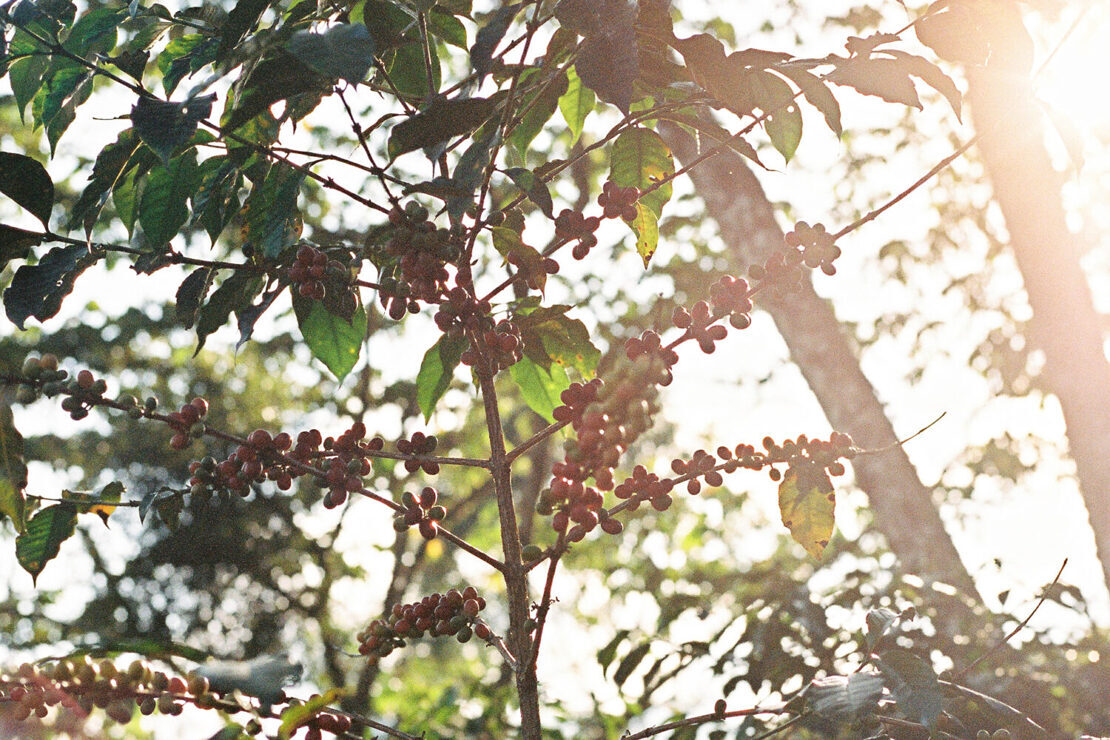
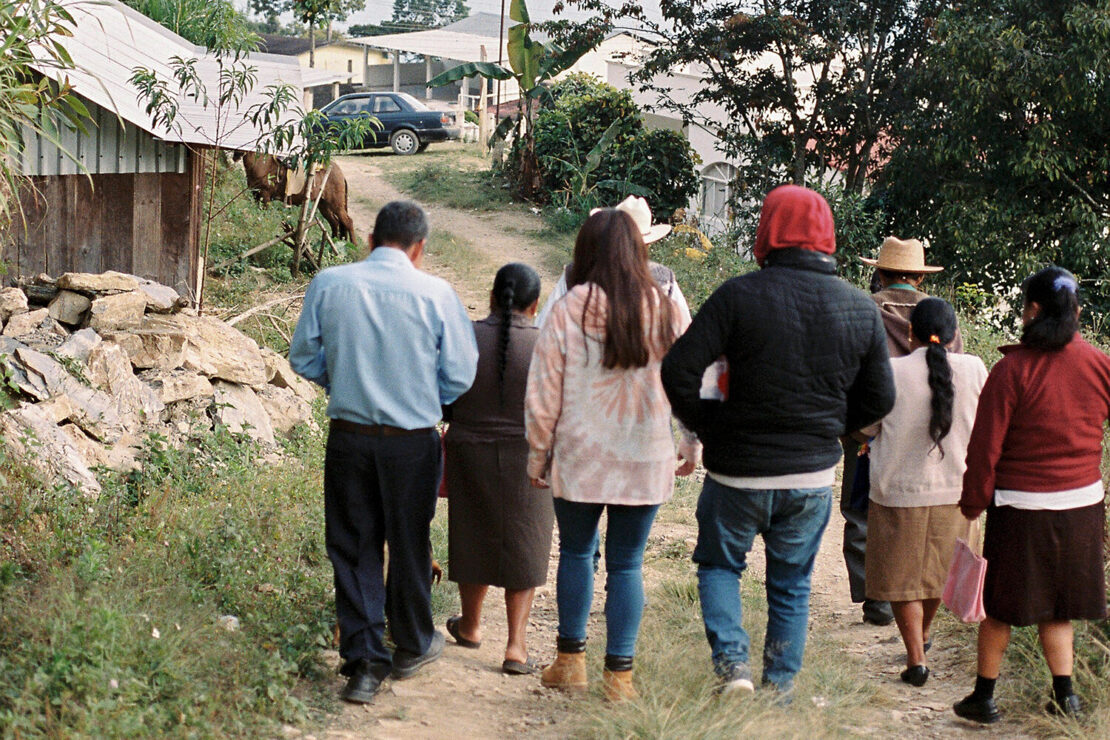
Xochitonalco
On the first day in Xochitonalco, we walked through the small plots of many of the producers who were gathered. They told us about which varieties they grow, which ones cause more problems for them and which ones are easier to grow, what varieties produce more coffee, or what kind of problems they were having to deal with. The producers also asked questions about roasting and the coffees we buy from other countries. They were very interested and wanted to take lots of photos with us and, though the Spanish of many of them wasn't much better than ours and we didn't speak any Mazatec, we were able to communicate about many topics.
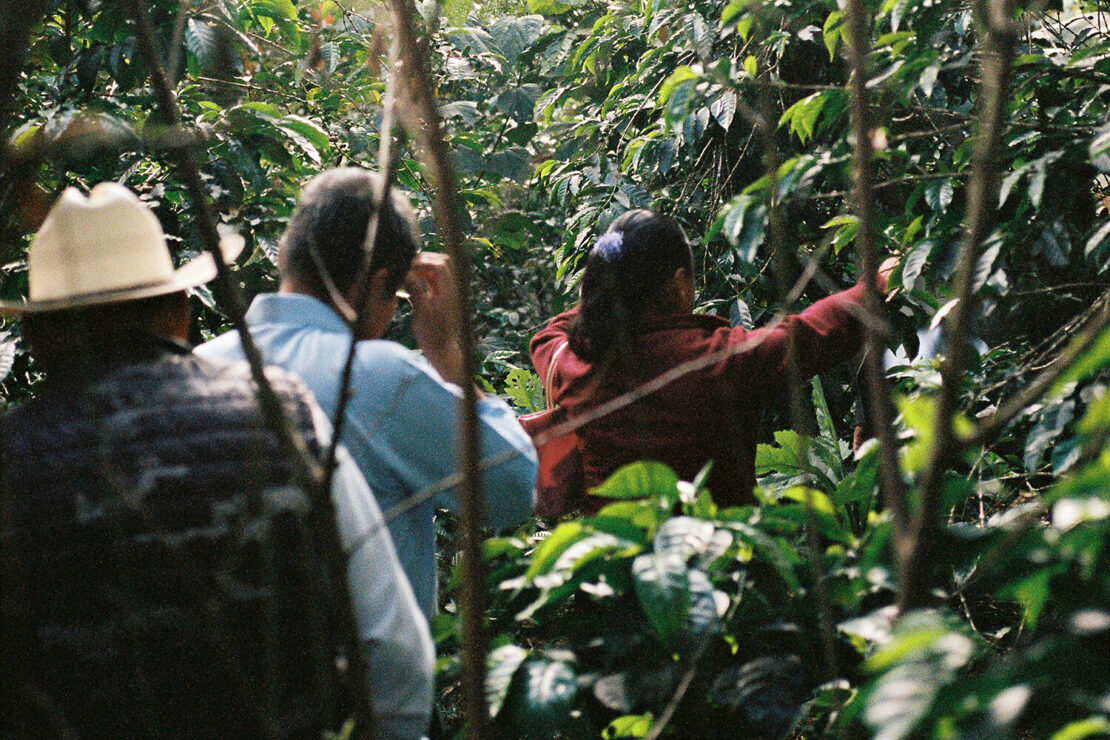
Caro
Caro is one of the producers in this region who, along with her family, produces a slightly larger quantity of coffee than most others in the community. In collaboration with various organizations, she also conducts experiments on their land, for example to test the cultivation of certain coffee varieties in this specific climate or to evaluate different compositions of soil in direct comparison. At the end of our visit to this community, we were invited to Caro's house for coffee and sweet pastries, where we met other members of her family as well and chatted about this and that in all the languages available to us.
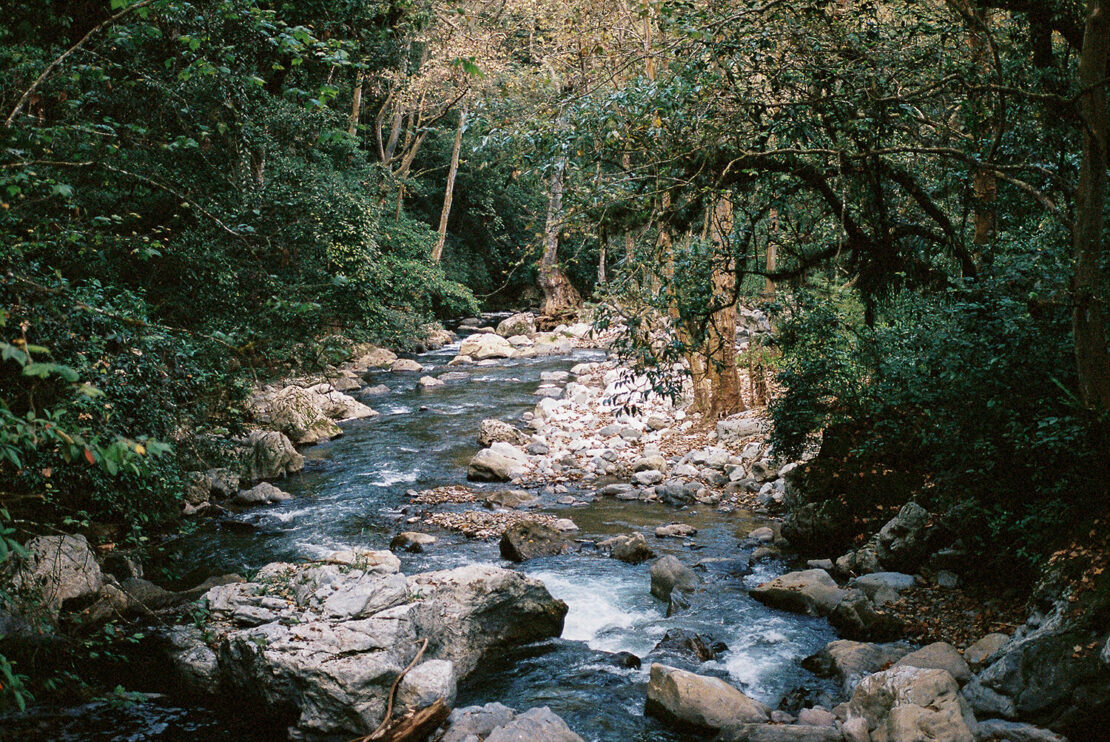
Coffee Cultivation
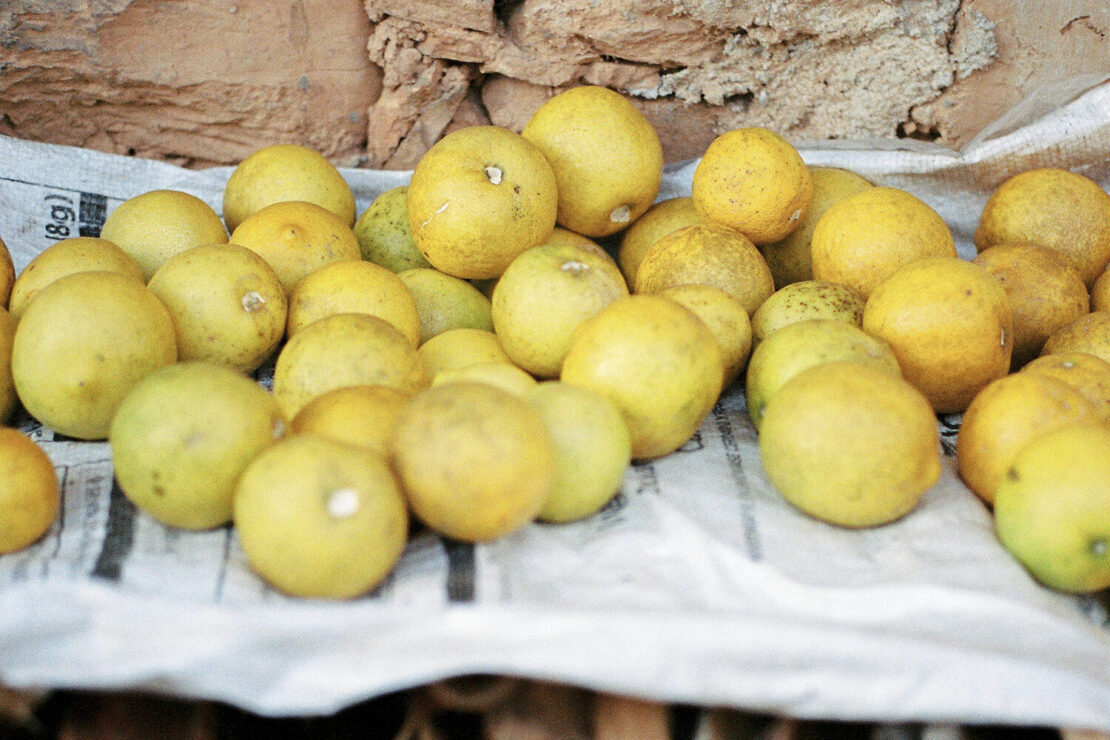
More Farms
Again and again, we were struck by the wonderful hospitality of the people in the Sierra Mazateca. The family of the house we were invited in offered us refreshments and, after a while, the woman of the house conjured up a delicious mole dish for about eight people in no time at all. After lunch, we said our goodbyes and thanked them for the hospitality, Miguel had a brief chat with two of the producers about the ideal soil composition for their young coffee plants, and we were off again.
Next on the agenda for us was a little bit of sightseeing: Miguel and Osiris took us to the most famous waterfall in the area, the «Cascada del Puente de Fierro». We visited the next, even smaller group of producers in Santa Cruz Acatepec, with whom we also walked through various sections of their land and learned about their coffees.

Llano de Agua
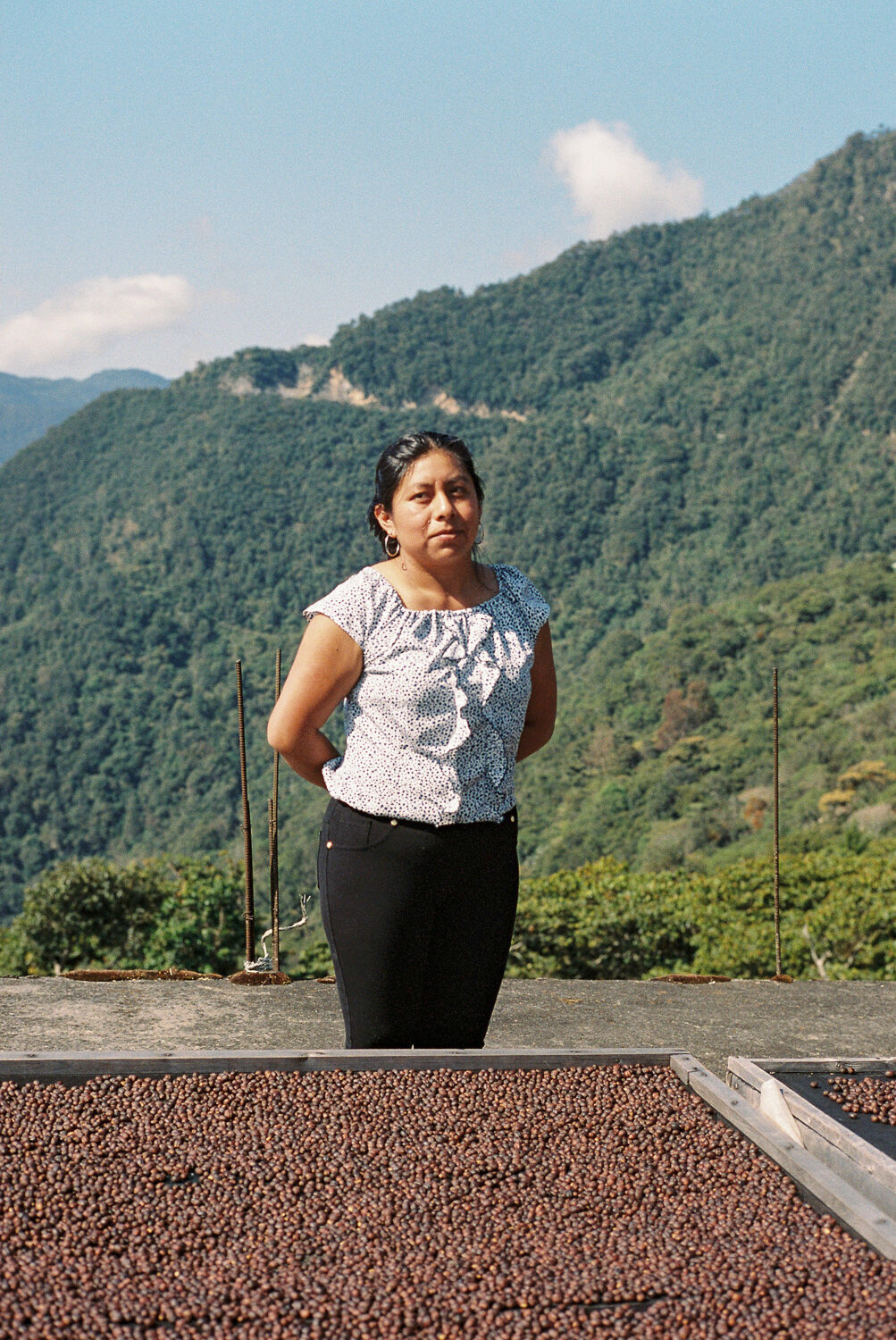
Maricela Esperón
Some time ago, the production on El Sótano was adapted from the washed process to the natural method, which is extremely unusual in this region that sees a lot of rainfall, which makes drying the natural-processed coffee rather difficult. Nevertheless, Maricela is convinced by working with this method of less intervention and manages to produce coffees of an impressive quality. She is clearly passionate about what she is doing. Most recently, the family also experimented with anaerobic fermentation. They work very precisely to keep the quality of the coffee consistently high from year to year. When Miguel announced that we were about to leave, the Esperóns insisted we stay for lunch. Seeing that the older women in the family had already started to cook, we obviously couldn't refuse this offer, even though we were scheduled to leave quite a bit earlier. We enjoyed the excellent mole and scrambled eggs with chillies, accompanied by wonderful, freshly made tortillas. Before we left, we soaked up the fantastic view from the roof of their house, which is also where the coffee is dried, one last time.
As we left Maricela's El Sótano farm, it was also time to say goodbye to Miguel and Osiris, who were the perfect hosts and guides in this region, and we drove straight back to Oaxaca de Juárez. From there, we soon headed back to Switzerland via Mexico City, not before enjoying a few more days in this wonderful country. We had already been very impressed by the work of Maricela and her family during our visit. And we were just as impressed by the samples we received a few months later. We didn't hesitate for long and bought this truly great coffee, which is now part of our permanent range.

